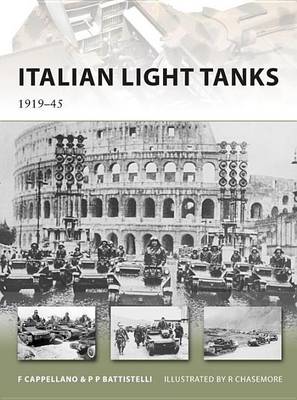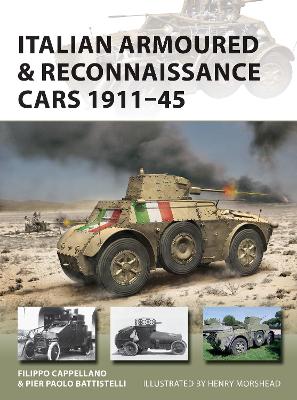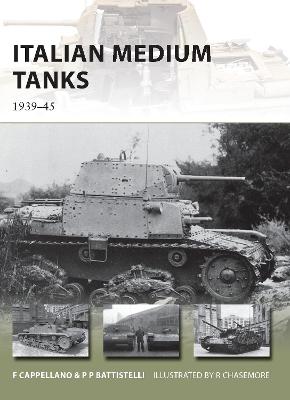New Vanguard
2 primary works • 3 total works
Book 191
The Italian army, unlike those of the British and French, did not use tanks in combat during World War I and, by November 1918, only one training unit equipped with French Schneider and Renault tanks had been formed. Consequently, during the 1920s the Italian army had just one single tank type in its armoured inventory - the Fiat 3000. Only in 1927 was the first tank unit formed as a branch of the infantry and not as an independent organization, while the cavalry rejected the idea of both tanks and armoured cars and decided to stand by the use of horses for its mounted units. Between 1933 and March 1939, a further 2,724 CV 33 / L 3 tanks were built, 1,216 of which were exported all over the world. By the time Italy entered the war in June 1940, the army had 1,284 light tanks, 855 of which were in combat units, including three armoured divisions. Variants of the CV 33 / L 3 tanks included flame-throwers, bridge-layers, recovery vehicles, and a radio command tank. Some L 3 tanks were still in use in 1945, by both the Germans and the German-allied Italian units of the Repubblica Sociale.
Book 261
Italian Armoured & Reconnaissance Cars 1911-45
by Filippo Cappellano and Pier Paolo Battistelli
Published 26 July 2018
The first Italian armoured cars were used in the war in Libya in 1911-12 against the Ottoman Empire. With few tanks being developed, the Italians relied instead on the development of more mobile armoured cars like the Ansaldo Lancia 1 Z, during World War I, but post-war the army, focusing on the Alpine battlegrounds of Italy's northern borders, did not consider armoured cars suitable for reconnaissance duties.
The experience of the Spanish Civil War would provide the much needed last push for the Italians to develop modern armoured cars. The result were the famous AB 41-43 models, which fought against the British in North Africa and Marshall Tito's forces in Yugoslavia, along with other vehicles such as the AS 36 light armoured car.
Using detailed colour plates and contemporary photographs, this book examines the development of the Italian armoured car in the two world wars and the inter-war years, from the deserts of North Africa to the slopes of the Alps.
The experience of the Spanish Civil War would provide the much needed last push for the Italians to develop modern armoured cars. The result were the famous AB 41-43 models, which fought against the British in North Africa and Marshall Tito's forces in Yugoslavia, along with other vehicles such as the AS 36 light armoured car.
Using detailed colour plates and contemporary photographs, this book examines the development of the Italian armoured car in the two world wars and the inter-war years, from the deserts of North Africa to the slopes of the Alps.
Several factors delayed and greatly hampered the development of an Italian medium tank during World War II. The first was the strategic stance of the country, focussed on a war against neighbouring countries such as France and Yugoslavia, and ill-prepared for a war in the Western Desert. Since these European countries bordered with Italy in mountainous areas, light tanks were preferred as these were deemed much more suitable for the narrow roads and bridges of the Alps. Furthermore, development was hampered by the limited number of Italian industries, whose production was also heavily fragmented. All these factors delayed the development of the first prototype of an Italian medium tank - the M 11 - which would only appear in 1937 and did not enter production until 1939. Although technically inferior to their German and Allied counterparts in 1941-43, the Italian M tanks proved to be quite effective when used by experienced crews with adequate combat tactics. In fact, their major shortcoming actually proved to be their limited production figures. While production was limited, innovation was not and, between 1941 and 1943, several experiments were carried out on the Italian tanks that produced interesting prototypes such as the anti-aircraft semovente.


